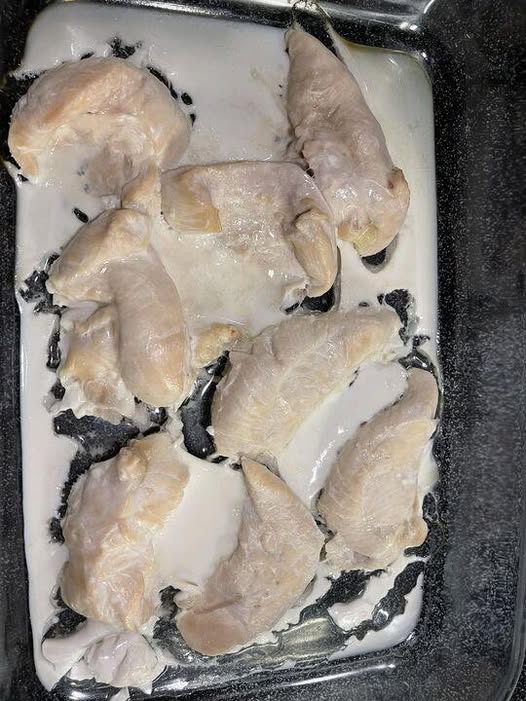
If you have ever baked or roasted a chicken breast only to notice a strange white substance oozing out, you are not alone. At first glance it can look unpleasant, even worrying, and many home cooks wonder if it means the chicken is unsafe or improperly cooked. The truth, however, is far less dramatic. This occurrence is common, even in restaurant kitchens, and it is not a sign that your meal has gone wrong. Rather, it is simply a natural part of the cooking process.
The white residue is made up primarily of water and protein. Chicken breasts in particular are prone to releasing it because they contain relatively high levels of protein and very little fat. When exposed to heat, the proteins in the meat denature, meaning they unravel from their original structures. As this happens, water that was bound inside the muscle fibers is released. The combination of protein and water is then pushed to the surface of the meat, forming the clumpy, sticky white substance you sometimes see.
There are certain circumstances that make this reaction more noticeable. Skinless, boneless chicken breasts tend to produce more of the substance than fattier cuts, since there is less fat to buffer moisture loss. Cooking chicken quickly at very high temperatures can increase the effect as the proteins contract more forcefully, pushing out additional water. Another common factor is cooking chicken that has been frozen. Ice crystals that form during freezing can puncture and weaken the muscle fibers. When that chicken is later cooked, the damaged fibers release more liquid and protein, resulting in a heavier layer of the white residue.
Although the sight can be unappealing, it is completely safe to eat. The substance is nothing more than coagulated protein mixed with water, similar to what happens when an egg white solidifies during cooking. It does not mean the chicken is undercooked, spoiled, or contaminated. The only real warning signs of bad chicken are unrelated: a strong unpleasant odor, a slimy texture when raw, or a grayish color. If your chicken shows any of those signs before cooking, it should not be eaten. Otherwise, the presence of this white protein ooze does not pose any risk.
If you would prefer to reduce how much of it appears on your chicken, there are a few helpful techniques. Cooking at lower temperatures allows the proteins to denature more gently, reducing the force that pushes liquid to the surface. Brining chicken breasts before cooking can help the meat retain moisture, which in turn lessens the amount of liquid lost. Some cooks also recommend searing the meat briefly before finishing it in the oven, which can create a surface barrier that locks in juices. Allowing chicken to rest at room temperature for a short period before cooking is another simple method to limit sudden moisture loss.
In the end, though, it is worth remembering that this white substance is natural and harmless. While it may not look especially appetizing, it does not alter the flavor of your dish, nor does it indicate a problem with your cooking skills. Lean cuts like chicken breast are especially prone to this effect, and it is something that even professional chefs encounter regularly. Understanding what it is—and why it happens—can help remove the worry and let you focus instead on enjoying a healthy, well-cooked meal.



